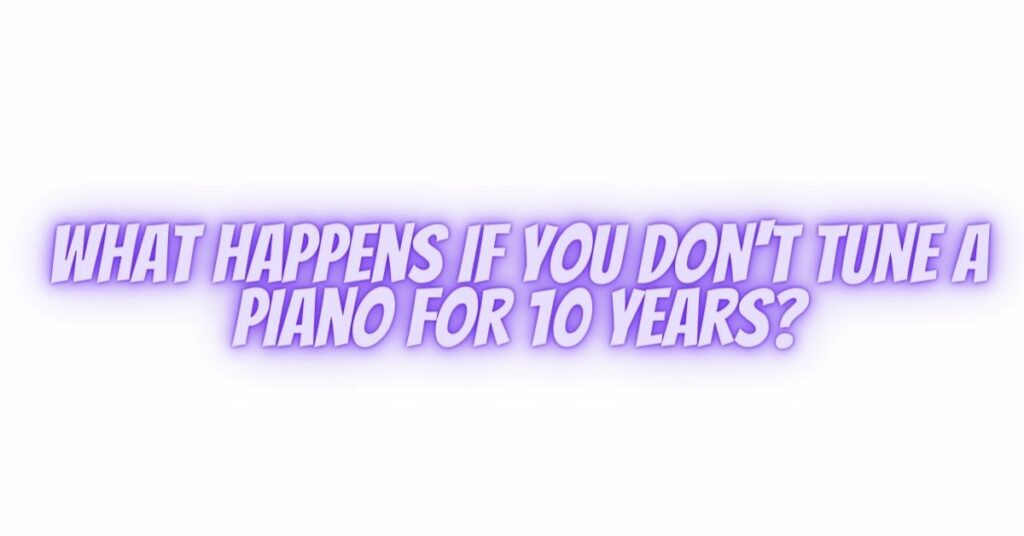Pianos are intricate and finely-tuned instruments, known for their rich and resonant sound. However, they are also sensitive to changes in temperature, humidity, and regular use. Neglecting piano tuning can lead to a variety of issues that affect the instrument’s sound, playability, and overall lifespan. In this article, we will explore the consequences of not tuning a piano for ten years and the importance of regular maintenance.
1. Pitch Drifts Significantly
One of the most noticeable consequences of not tuning a piano for an extended period is a significant pitch drift. Over time, the strings in a piano naturally lose tension due to factors like temperature and humidity fluctuations. This causes the piano to go out of tune, and the longer the neglect, the further the pitch will drift. After ten years without tuning, the piano’s pitch can be far from its intended standard, making it sound dissonant and unpleasant.
2. Structural Stress
Piano strings are under immense tension, and their stability is crucial for the piano’s structural integrity. When a piano is left untuned for an extended period, the strings may lose tension unevenly, resulting in structural stress. This stress can lead to problems such as:
- Cracks in the soundboard, which affects the piano’s tonal quality.
- Damage to the pinblock, making it challenging to hold the correct pitch.
- Warping or twisting of the piano’s wooden components due to inconsistent pressure.
3. Poor Sound Quality
A piano that hasn’t been tuned in a decade may produce poor sound quality. The strings’ lack of proper tension can lead to a dull, muted, or uneven tone. Notes may sound out of balance or “off” from each other, resulting in a less enjoyable playing experience.
4. Difficulty in Tuning
Pianos that haven’t been tuned for an extended period can become challenging to bring back to pitch. The tuning pins may have become loose, making it difficult to stabilize the strings’ tension. Tuning such a piano may require more extensive and costly repairs.
5. Expensive Repairs
Neglecting piano maintenance for ten years can result in extensive damage that requires costly repairs. Restoring the piano to its proper condition may involve:
- Replacing broken or rusted strings.
- Repairing structural damage to the soundboard and pinblock.
- Adjusting or replacing action parts that have worn down.
- Restoring the piano’s overall stability and playability.
6. Loss of Investment Value
Pianos are often considered long-term investments and even family heirlooms. Neglecting tuning and maintenance for an extended period can lead to a decrease in the instrument’s value and desirability. A well-maintained piano can maintain or even appreciate in value over time, while a neglected one may lose its appeal and value.
Conclusion
Regular piano tuning and maintenance are essential for preserving the instrument’s sound, playability, and value. If a piano is left untuned for ten years, the consequences can be severe, including pitch drift, structural damage, poor sound quality, and expensive repairs. To keep your piano in optimal condition, it is recommended to schedule regular tunings by a professional piano technician, typically once or twice a year, even if the instrument is not played frequently. This investment in maintenance ensures that your piano remains a joy to play and a cherished part of your musical journey for years to come.

